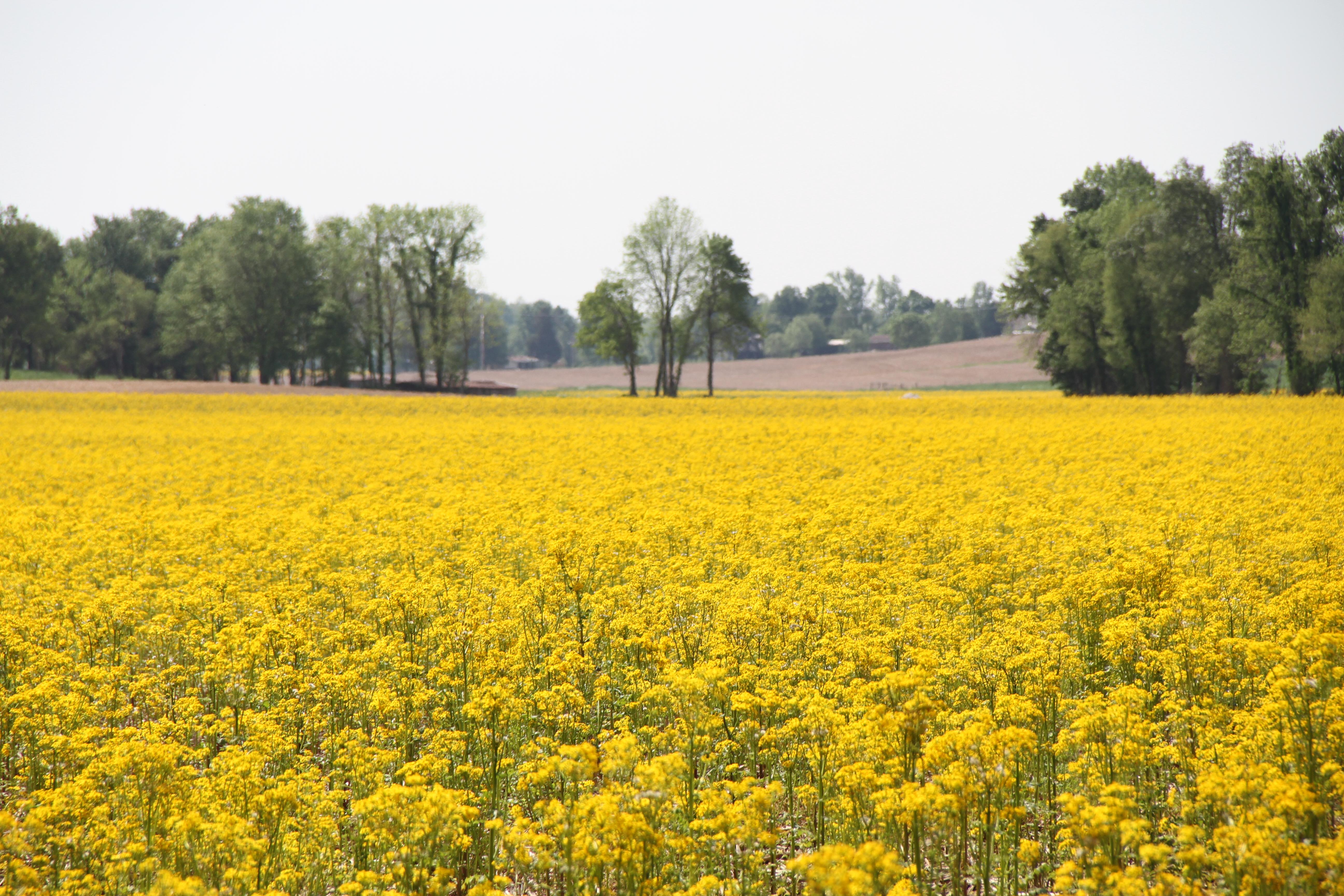Watch for Toxic Butterweed This Spring
Watch for Toxic Butterweed in Fields and Pastures This Spring
That sea of yellow flowers cropping up across fields and pastures isn't buttercups, baby. In fact, cressleaf grounsel, also known as butterweed, seems to build us up with their sunny display, just to let us down. Beyond being a weed in corn, soybean and wheat fields, the winter annual has toxic properties that make it especially troublesome in pastures and hay crops.
"Folks better be prepared for dense populations of winter annuals this spring," said University of Illinois weed scientist Aaron Hager. "My guess is winter mortality was very low, so if burndowns are delayed, we could have thousands of what people often assume are 'canola' fields this spring."
A member of the Aster family, butterweed produces many flowers on the ends of central stems. Individual flowers consist of a golden yellow inner disk and anywhere from 5 to 15 outer ray flowers that are bright yellow in color. One sure way to identify butterweed is to look for the hollow stem. As the stem elongates, it also often takes on a purplish tint.
Hager said butterweed favors moist to saturated soils and thrives in areas such as wastelands, pastures, fencerows and roadsides. The increased adoption of no-till and reduced tillage conservation practices has increasingly lured it into crop fields.
"By the time butterweed flowers, it's become very difficult to control with herbicides and many plants ultimately set seed, which is how it spreads," Hager said. "But spring is a great time to keep track of where you had infestation and remember the best time to control it is in the fall."
In 2009, Hager and his then graduate student, Jeremy Lake, looked at herbicide selection and application timing for control of butterweed. They found fall-applied treatments provided very good control. Less control was achieved when identical treatments were applied in the spring -- likely because plants were so much larger at application time.
DON'T FEED THE DAISIES
The need to identify butterweed is even more critical if it is growing in pasture or forage fields.
P[L1] D[0x0] M[300x250] OOP[F] ADUNIT[] T[]
Bulletins from The Ohio State University indicate it's unlikely animals will consume significant quantities of butterweed under typical grazing conditions when more palatable forages are available. But droughty conditions can challenge that statement.
Pyrrolizidine alkaloids are the principal toxin involved. While toxicity decreases in some plants as they dry, that is not the case with butterweed. These toxins are not decreased if the plants are dried and baled. Ensilaging will decrease the concentration of toxins but not eliminate them.
Butterweed is toxic to both cattle and horses. Cattle appear to be more susceptible to poisoning than sheep or goats, according to the Ohio State literature. Calves and younger cattle are more susceptible than older cattle, but it can be fatal to all age groups at high enough doses, the bulletins point out.
Producers with high concentrations of butterweed may be forced to bale first cutting and throw it away, according to Ohio State literature. The weed usually has set seed and died by second cutting. Read the full report here: https://agcrops.osu.edu/…
Extension weed specialists can recommend herbicide options for your state and specific crop.
For more information on butterweed from Ohio go to: https://bpb-us-w2.wpmucdn.com/…
For Missouri:
For Indiana:
https://extension.entm.purdue.edu/…
Pamela Smith can be reached at pamela.smith@dtn.com
Follow her on Twitter @PamSmithDTN
(c) Copyright 2023 DTN, LLC. All rights reserved.






